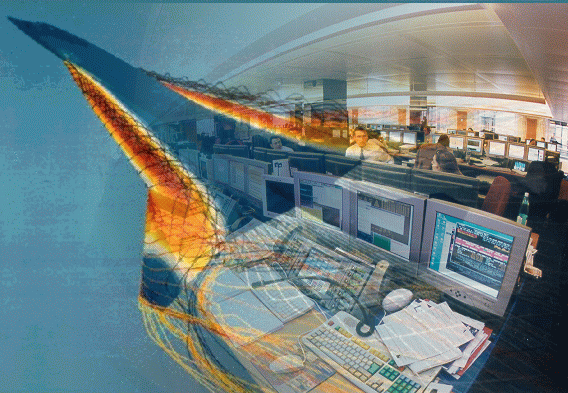|
MACS 1 Projects in applied mathematics and scientific computing Professor : Caroline Japhet |
 |
Manyphysical phenomena can be formulated as differential equations, for example the airflow around an aircraft, the evolution of a glacier (see also here) or the temperature in your room. Most of these equations however can not be solved exactly by analytical tools. Their solution has to be approximated using numerical methods. The goal of this course is, in a first step, to implement the numerical methods learned in numerical analysis courses of MACS 1. Then, in a second step, starting with a physical model problem, to perform and implement algorithms to solve it, and interpret the simulations results (are the results accurate and close to the physics ?). In this second step, on project is given by student. We use the Matlab langage to develop prototype codes. After the course you will be able, from a complex problem, to decompose it in a sequence of simple subproblems (modules) that will be implemented and validated independently as soon as possible. Modules will then be brought together to solve the original problem. Once the initial problem is validate, you will be able to define relevant tests to recover the theoretical results (consistency, stability,...) studied in class, compare different numerical methods and choose the "best one" to get an accurate solution, close to the physics with a minimum computational time and storage. You will be able to understand problems in your calculations and deal with them.
Handouts
- Algorithmic langage common to MACS 1 and MACS 2
- Finite precision arithmetic - round-off errors
- Non
linear
equations
in
one
variable
TPs
- TP1 (Finite precision arithmetic - round-off errors)
- TP2 (Non linear equations)
- Exam
- TP3 (Gaussian Elimination)
- TP4 (LU Factorization)
- TP5 (Non linear systems)
- TP6 (ODE)
- TP7 (ODE-Application)
- TP
Latex
- Projet Final
Introduction to Beamer
Introduction to Latex
- Short Math Guide for Latex
- Introduction ŕ Latex (ENSTA)
- Latex symbols
- Introduction
ŕ Latex (D. Mateo, MACS engineer)
Introduction to Matlab
- Introduction ŕ Matlab (M. Postel)
- Introduction ŕ Matlab (E. Luneville & P. Ciarlet)
- An introduction to Matlab (D.F. Griffiths)